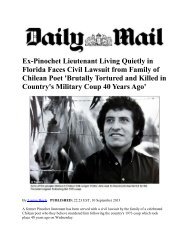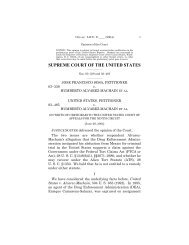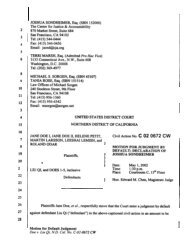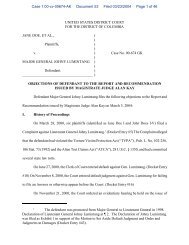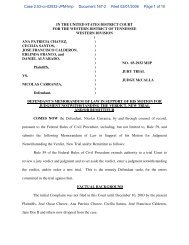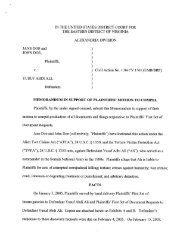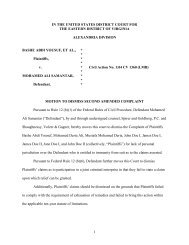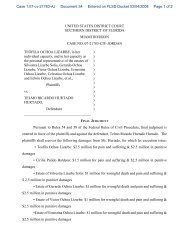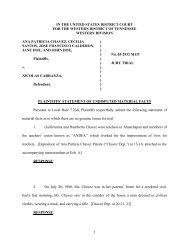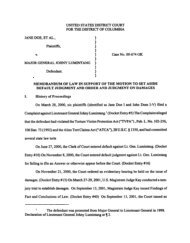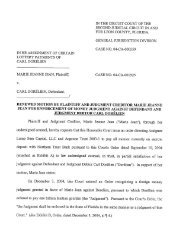Petitioner, v. Respondents. - Center for Justice and Accountability
Petitioner, v. Respondents. - Center for Justice and Accountability
Petitioner, v. Respondents. - Center for Justice and Accountability
Create successful ePaper yourself
Turn your PDF publications into a flip-book with our unique Google optimized e-Paper software.
31will there be any further proceedings in the lower courtsimplicating the DTA’s withdrawal of jurisdiction.Finally, this Court has ample authority to effectuate itsjudgment under the All Writs Act, 28 U.S.C. § 1651.Originally part of section 14 of the Judiciary Act of 1789, theAct provides that “[t]he Supreme Court <strong>and</strong> all courtsestablished by Act of Congress may issue all writs necessaryor appropriate in aid of their respective jurisdictions….” 31Although the Act has been read as not conferring analternative basis <strong>for</strong> jurisdiction, Syngenta Crop Prot., Inc. v.Henson, 537 U.S. 28, 31-33 (2002), it has been read asconferring broad authority upon federal courts “to fashionextraordinary remedies when the need arises,” Pa. Bureau ofCorr. v. U.S. Marshals Serv., 474 U.S. 34, 43 (1985).Thus, the government’s reliance on Bruner <strong>and</strong> similarcases is misplaced. None of those decisions involved theunique circumstances arising in this case, in which (1) a finaljudgment on the merits was issued prior to the withdrawalof jurisdiction; (2) there was no question of the lower courts’jurisdiction at the time this Court granted certiorari; <strong>and</strong> (3)the new legislation affects only the lower court’s authorityto “hear or consider” a claim <strong>and</strong> not its authority toimplement a decision entered at a time when the court hadauthority to hear <strong>and</strong> consider the petition <strong>for</strong> relief.jurisdiction, <strong>and</strong> the <strong>for</strong>eclosure of other means by which petitioner canobtain review constitutes an extraordinary circumstance. See e.g., Martin v.Hunter’s Lessee, 14 U.S. 304, 362 (1816) (Supreme Court may directly affirmdecision of trial court); Stanley v. Schwalby, 162 U.S. 255, 283 (1896)(Supreme Court may directly order trial court to dismiss case); Tyler v.Magwire, 84 U.S. 253 (1873) (Supreme Court may order entry of judgmentin party’s favor in trial court); NAACP v. Alabama, 377 U.S. 288, 310 (1964)(Supreme Court has authority to <strong>for</strong>mulate decree <strong>for</strong> entry by trial court).31 The 1789 Act specified that “All the . . . courts of the United States, shallhave power to issue writs of scire facias, habeas corpus, <strong>and</strong> all other writs notspecifically provided <strong>for</strong> by statute.” § 14 of the Judiciary Act of 1789, 1 Stat.81-82 (emphasis added). In 1948, in what is now 28 U.S.C. § 1651,Congress replaced “all other writs not specifically provided <strong>for</strong> by statute”with “all writs.” This suggests that while a specific statute might havelimited writs under the 1789 Act, the new act eliminates those limits –permitting the court to even issue a writ of habeas corpus in anappropriate case. Indeed, Congress exp<strong>and</strong>ed the Act to permit courts toissue not only “necessary” writs, but instead “necessary or appropriate”ones, a change that suggests § 1651 was intended to broaden the Act.



